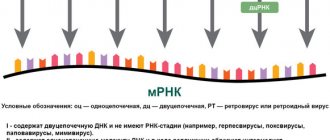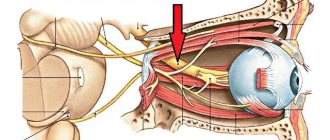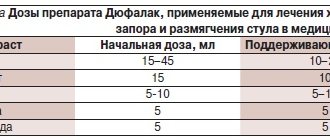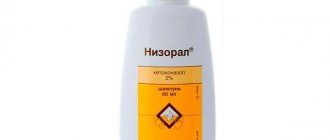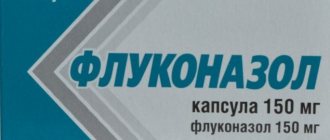ARVI, colds, cough, sore throat and stuffy nose are a condition that is difficult for an adult to bear, let alone a child. One of the effective ways to treat viral diseases and alleviate their symptoms is nebulizer therapy. Inhalations for children are effective, quick and painless: often a child would be more willing to “sit” with a nebulizer for 5 minutes than to take a tasteless medicine. The use of an inhaler will be useful at various stages of the disease: the device converts the drug into tiny particles (aerosol) that can penetrate directly to the site of the disease, be it the bronchi or lungs. It is this targeted effect that makes inhalations so effective in treating children.
The mesh nebulizer (electronic mesh) will be the most convenient to use, because it has a number of undeniable advantages over other types of devices (compressor, ultrasonic, steam):
- the mesh nebulizer does not destroy any drugs during operation (for example, many effective solutions are not compatible with ultrasonic devices for this very reason);
- inhalers of this type can be used with all medications, except those created on an oil basis (the reason for this is not only the technological feature of the device, but also safety - oil solutions are dangerous for inhalation and have a number of very serious contraindications);
- these devices operate silently, do not frighten or irritate the child - when they feel unwell, children are especially sensitive to irritants;
- The mesh nebulizer is small in size and can be powered either by batteries or from the mains - you can always take the device with you if necessary, or simply carry out inhalation in the comfort of your home, sitting comfortably.
Content:
- Preparation of equipment
- Preparing the medicine
- Procedure technique
- Inhalation for children
An inhaler is a device that allows you to deliver a fine aerosol of medicinal substances into the lungs and upper respiratory tract. It is used for cough, difficulty breathing, hoarseness, rhinorrhea, chest pain caused by bronchitis, and difficult sputum discharge. Bronchodilators, antiseptics and antibiotics, mucolytic medications, regenerative agents, decoctions and infusions of medicinal herbs, and moisturizing substances are administered using the aerosol method. People prone to inflammatory diseases of the upper respiratory tract need to know how to use the inhaler correctly.
How do inhalations work on dry cough?
One of the most effective methods of treating dry cough is inhalation. Several decades ago, so-called “steam inhalations” were used - over a container with a special decoction.
But this method is quite dangerous because it can cause burns to the skin and respiratory tract. You should not breathe steam if there is an increase in body temperature, infectious lesions of the skin of the face or mucous membranes in the mouth.
But with the advent of special devices - nebulizers - the danger of inhalation has been reduced to zero. Such devices do not produce hot steam; the active substance is brought to an aerosol state using a compressor, a vibrating membrane or ultrasonic waves.
Inhalation procedures for dry cough provide many benefits
:
- This is the safest method of treatment, since the sprayed drug affects only the respiratory system, without causing undesirable effects on the digestive and other organs.
- Inhalations are very effective in the fight against dry cough.
- When performing the procedure from the first symptoms, the period of the disease is significantly reduced.
- Inhalation of the smallest particles of the drug facilitates the release of sputum, softens the development of the pathological process, and reduces the frequency and severity of attacks.
- With the help of a nebulizer, inhalations can be done without a visit to the clinic, at home.
- Inhalations are suitable for people of any age, the main thing is to choose the right drug and dosage.
In the nebulizer inhaler, the active substance breaks down into small particles that enter the respiratory system and act on the mucous membranes. This affects large areas of the respiratory system, including the lowest parts. The drugs successfully fight bacteria and microbes, suppress their growth, and eliminate bronchospasm.
Preparation of equipment
Before using the inhaler, you should perform a number of preparatory steps:
- Rinse the face mask, connecting hose and nebulizer chamber with clean water and dry.
- Treat elements in direct contact with the patient with an aqueous solution of chlorhexidine or miramistin.
- Assemble the device in accordance with the instructions.
- Fill the reservoir with a pre-prepared medicinal solution and place it in a vertical position.
The tank capacity for steam varieties is 70-100 ml, for compressor and ultrasonic varieties - 2-8 ml. If the maximum permissible volume is exceeded, liquid enters parts of the device that are not intended for this purpose and can damage the inhaler.
How to use the inhaler
Before using the inhaler for its intended purpose, you will first need to carefully study the instructions in order to avoid annoying mistakes that will lead either to equipment breakdown or to a decrease in the effectiveness of inhalation treatment. The technique for using different types of nebulizers may differ slightly, but there are still common features of using this device.
You need to fill the inhaler container with a medicinal substance that dissolves in a sodium chloride solution in a 1:1 ratio. For one session you will need only 3-6 ml. It is very important to remember that you cannot use boiled or distilled water to dissolve the medicine, only saline solution. Also, never try to simply crush the tablet and stir it into the solution. Nebulizers only contain inhaled medicines, which are sold online in ready-made form.
Then the inhaler is closed, and a mask or mouthpiece is attached to the outlet, after which the device is turned on and a session is carried out in open valve mode for 5-20 minutes, until the solution stops being converted into an aerosol. In this mode, aerosol particles with a diameter of 2 to 10 microns are formed, but if the plugs are closed, the dispersion of the particles is reduced to 0.5-2 microns. This mode is considered economical and faster; it helps to cover the most remote areas of the bronchial tree.
Breathing during inhalation should be free and normal, because excessive inhalations can provoke coughing attacks and cause irritation of the mucous membrane of the respiratory tract. At the end of the session, the nebulizer turns off and is disconnected from the compressor. All components that have had contact with the medicinal solution and the oral cavity are thoroughly washed in hot water using a disinfectant and washing solution. After which these parts are rinsed and dried with a soft cloth or even a hairdryer. By the way, even the longest inhalation procedure will not be able to use the entire medicinal solution. There is always a residual volume of 1 milliliter.
Preparing the medicine
Working solution
for compressor and ultrasonic type nebulizers, it is made from a mixture of the main drug with physiological sodium chloride solution. Typically, the combination is prepared in a ratio of 1 part of the drug to 3 parts of NaCl, however, the attending physician may recommend other mixing options. When coughing, use alkaline mineral water or herbal decoctions. The product must be heated to 37-38°C.
Solutions intended for steam inhalation are not heated. Devices of this type allow you to work only with herbal remedies, mineral water and essential oils (sandalwood, cedarwood, eucalyptus). It is also permissible to use an inhaler with pure saline solution. Medicines heated to 60-70°C are destroyed and have no effect.
On a note
: when the body temperature is above 37°C, steam inhalations are not performed. Cold steam procedures are not recommended for use in cases of inflammatory diseases of the middle ear.
Nebulizer therapy is a modern solution to fight viruses
In the fall, there is traditionally a sharp increase in colds: cough, stuffy nose, sore throat and general weakness become unwanted “companions” for many of us. Rain and cold, damp weather reduce the body's ability to resist viruses, and the lack of sun negatively affects the level of vitamin D, a deficiency of which is generally typical for Belarusians. All this makes our immune system even more vulnerable. This fall, in addition to all the “familiar” viruses, unfortunately, the threat of covid-19 infection remains relevant.
To prevent viruses, it is very important to observe the following nonspecific preventive measures; they are relevant both for viruses that are already well known to our body, and for covid-19:
- wearing a mask in public
- washing hands and using sanitizers
- washing products brought from the store (including packaging - antiseptics can be used to disinfect it)
- clothing appropriate for the weather (try not to get too cold)
- maintaining a sleep schedule (at least 7-8 hours)
- varied and nutritious diet: protein products, butter and vegetable oil, fresh vegetables and fruits, dairy products
- taking essential vitamins and microelements (be sure to get tested, take vitamins and supplements after consulting your doctor)
There is also specific prevention - vaccination and inoculations. If you do get sick, stay home and under no circumstances carry the disease on your feet, consult a doctor and follow his recommendations.
Very often, viral infections are the cause of respiratory tract diseases, for which nebulizer therapy is an effective treatment method. Nebulizer (inhaler)
acts on the problem area “focally”, delivering the drug to the desired area of the respiratory tract. Modern devices are multifunctional, easy to use and available for home use, which makes them indispensable in everyone’s first aid kit.
An effective option for home use is Microlife NEB PRO 2 in 1 Professional
- a comprehensive aerosol therapy system for the treatment of the upper and lower respiratory tract. This device is medium in size, yet it is equipped with a durable and quiet enough compressor, suitable for continuous use. An important advantage of the device is the ability to choose between a system that is controlled by breathing (the medicine is delivered only during inhalation and is not consumed during exhalation) and a system with a short therapy option for the treatment of the middle and lower respiratory tract.
The basic equipment also comes with a nasal rinser for treating the upper respiratory tract.
Rules for conducting nebulizer therapy at home:
- Use only medications specifically designed for nebulizers and only after a doctor’s prescription. You should not use distilled, boiled or, especially, mineral water - this will not bring any benefit, but will most likely cause harm. You should also not use essential oils, viscous suspensions, infusions and herbal decoctions.
- It is not recommended to carry out inhalations at temperatures above 37.5 degrees, or immediately after meals or physical activity. Nebulizer therapy should strictly not be carried out if there is a history of pulmonary hemorrhage or spontaneous pneumothorax (for example, with bullous emphysema), as well as in the presence of serious cardiac arrhythmias and heart failure.
- For diseases of the nasal cavity, inhale/exhale through the nose; for diseases of the larynx, trachea, bronchi and lungs, inhale through the mouth.
- If you store the medicine in the refrigerator, then allow it to warm up slightly before use, this will make inhalation more comfortable.
- Breathe evenly and freely; if any items of clothing interfere with you or compress your airways, remove them.
- After inhalation, disinfect all parts, rinse with water and dry.
The use of nebulizers helps to increase the effectiveness of treatment of both acute and chronic respiratory diseases and is an affordable method of treatment!
Procedure technique
1 hour before and for an hour after the procedure, you should not eat, smoke, use expectorant medications, or gargle with antiseptic solutions. The duration of one inhalation should not exceed 7-10 minutes. It is forbidden to talk during treatment. It is permissible to take up to 5-6 inhalations per day, the average number is 2-3 episodes of treatment using different medications. The interval between them is 1.5-3 hours.
To understand how to do inhalations with a nebulizer, you need to remember the following algorithm:
- Place the device in a stable position.
- Sit comfortably and relaxed in a chair or on a bed.
- Place the mask tightly on your face or wrap your lips around the mouthpiece.
- Turn on the device.
- Breathe evenly and deeply, inhaling through your mouth and exhaling through your nose. After inhaling, it is recommended to hold your breath for 2 seconds.
- After completing the procedure, rinse your mouth with water.
- Wash the washable parts of the device, dry it and put it away for storage.
Steam inhalers are easy to use. You need to pour the medicine into the reservoir, turn on the device and press your face tightly to the mask. Before breathing with a steam-type inhaler, you must make sure that there are no contraindications: hyperthermia, bleeding, swelling of the respiratory tract. The duration of the procedure reaches 15-20 minutes. Inhalations are taken slowly to avoid burns from hot steam. After completing therapy, you need to refrain from leaving the house for 1-3 hours, especially in the cold season.
On a note
: deep breathing can provoke hyperaeration phenomena: dizziness, weakness, incoordination. To avoid this, short breaks are required during inhalation.
What are inhalers and how do they work?
There are many types and models of inhalers in the pharmacy chain, all of them have a similar design. Currently, three main types of inhalers are used in medical practice: steam, ultrasonic and jet. The last two are united by the term “nebulizers” from the Latin word nebula - fog, cloud. They generate not vapors, but a stream of aerosol consisting of microparticles of the inhaled solution.
The inhaler includes a main unit that generates a stream of air that creates a medicinal aerosol of the required dispersion. In the main block there is a chamber in the form of a plastic glass with a volume of 5-10 ml, into which the medicinal solution is poured.
The container contains a damper with two outputs, one of which leads to the device itself, and the second is the output. A tube, mouthpiece or mask is attached to this hole, into which an aerosol of medium and low dispersion is supplied. Coarsely dispersed solutions lead to rapid breakdown of the device and a decrease in the effectiveness of treatment. Nebulizers may include special mouthpieces, children's masks, nasal attachments, sprayers, and a mouthpiece.
Inhalation for children
Inhalation for children under 5 years of age must be carried out in compliance with certain rules:
- duration - no more than 3 minutes;
- only the face mask is used, not the mouthpiece;
- the solution temperature does not exceed 30°C.
- when working with an infant, you should hold him and press the mask tightly to his face;
- nebulizer inhalations are allowed during sleep.
Doses of drugs for the working solution vary depending on the age of the child. It is difficult to choose them wisely without a medical education. Therefore, it is unacceptable to use aerosol products without consulting a doctor.
The inhaler is a modern and effective means of treating diseases of the respiratory system. However, its illiterate use can lead to the development of severe complications: meningitis, pneumonia, laryngeal edema. For the procedure to benefit the patient, you need to know how to use the inhaler correctly.
Read in this article:
- Why does a dry cough appear?
- How do inhalations work on dry cough?
- When can and cannot use a nebulizer?
- What drugs are inhaled?
- Rules for the procedure
- Nebulizers for inhalation for dry cough
- How to deal with dry cough effectively and safely?
A dry cough is often a companion to ENT diseases, colds and other pathologies. Such an obsessive symptom causes discomfort and can be truly debilitating. But there are quite effective methods for treating such conditions.
Tips for use
- Before use, it is necessary to wash the inhaler parts.
- Parts in contact with a sick person should be thoroughly disinfected (with an aqueous solution of chlorhexidine or miramistin).
- Assemble the inhaler.
- It will be filled out by special solution.
- Solutions intended for steam inhalation are not heated.
- Before using the inhaler, it is better to avoid eating and smoking.
- During one operation, the use should not exceed 7-10 minutes, and the inhaler should not be used more than 5-6 times a day.
- During the procedure, inhalations should be slow.
When can and cannot use a nebulizer?
Nebulizer inhalations are performed for almost any ENT disease:
- bronchitis in acute, chronic, obstructive forms;
- pneumonia;
- tonsillitis;
- laryngitis;
- tracheitis;
- viral infections of the respiratory system;
- infectious diseases.
There are few contraindications for this procedure. These include a tendency to nosebleeds, respiratory or heart failure, and hypertension. Inhalations should not be performed in case of hemoptysis, individual intolerance to drugs, during or after myocardial infarction, or cerebral stroke.
Carrying out the procedure for a runny nose
Inhalation with saline solution can be performed even on newborn children. Once on the nasal mucosa, the medicinal liquid softens it and promotes the removal of mucus. If you have a runny nose, the procedure should be done every 4 hours. Treatment should be started at the first manifestations of the disease; if the disease has been going on for several days, saline solution will not help. The use of medications will be required.
You can add various essential oils, for example, pine needles, eucalyptus, to inhalation with saline solution. Aloe or Kalanchoe juice is also used. But all these means must be used with caution. Very often they cause allergies.
What is a nebulizer?
A nebulizer is a special device in which medicinal liquids are converted into drops. The latter, when they get on the mucous membrane of the nasopharynx or lungs, penetrate inside and have a very good therapeutic effect.
What differences does this saline inhalation have? The nebulizer can be used by both the smallest children and the elderly. The thing is that when using this device you do not need to take a strong breath or adapt to its operation. Inhale when it is convenient for you. The medicine does not evaporate anywhere, but is located in a special tank.
The saline solution breaks down into small particles using a special compressor built into the device and powered by the network.


